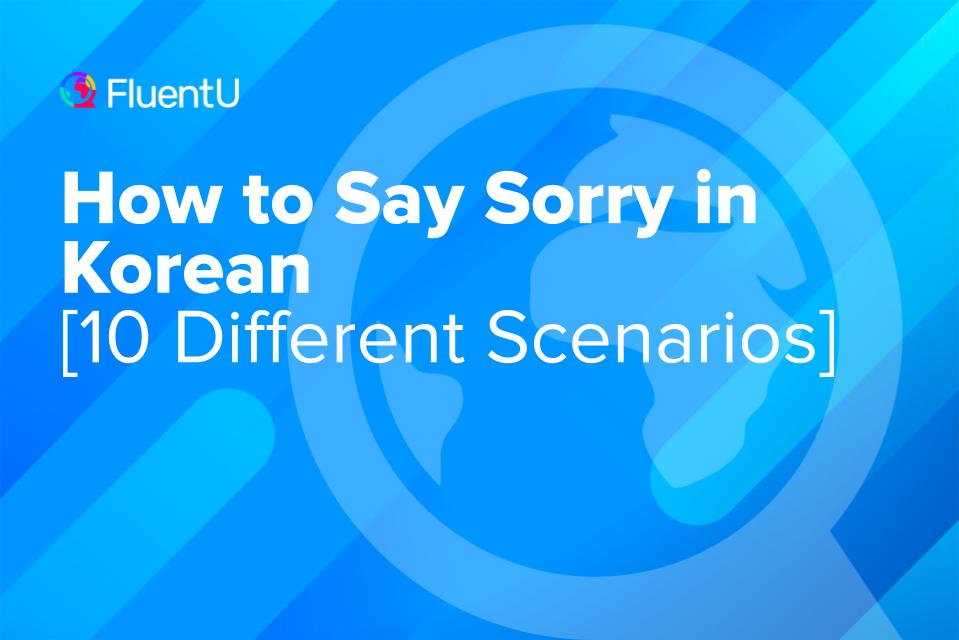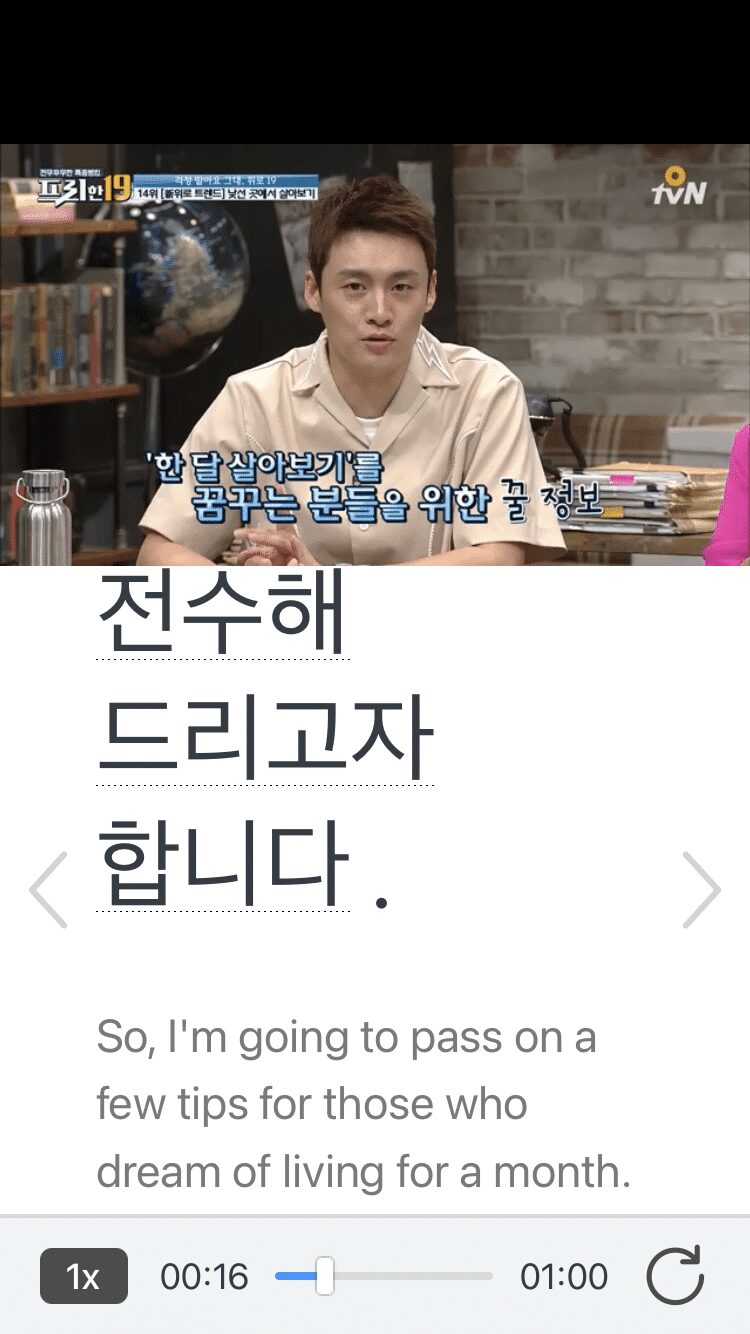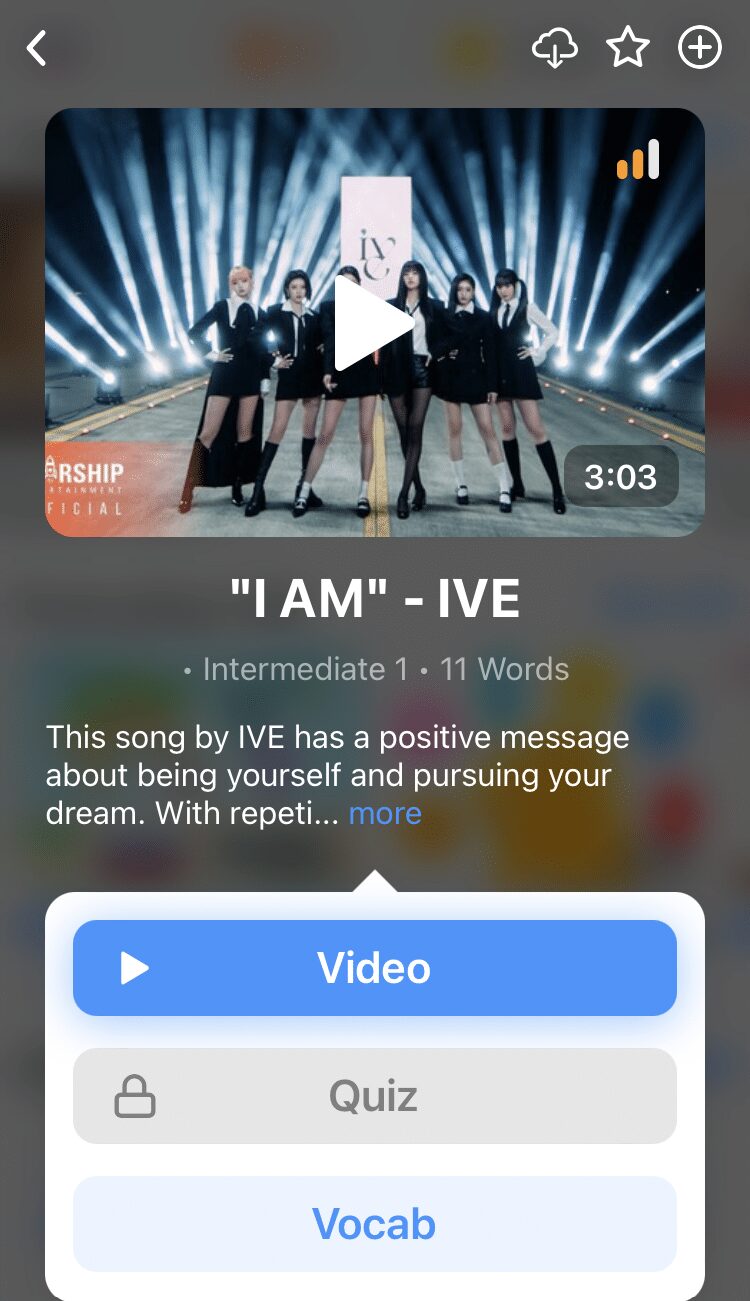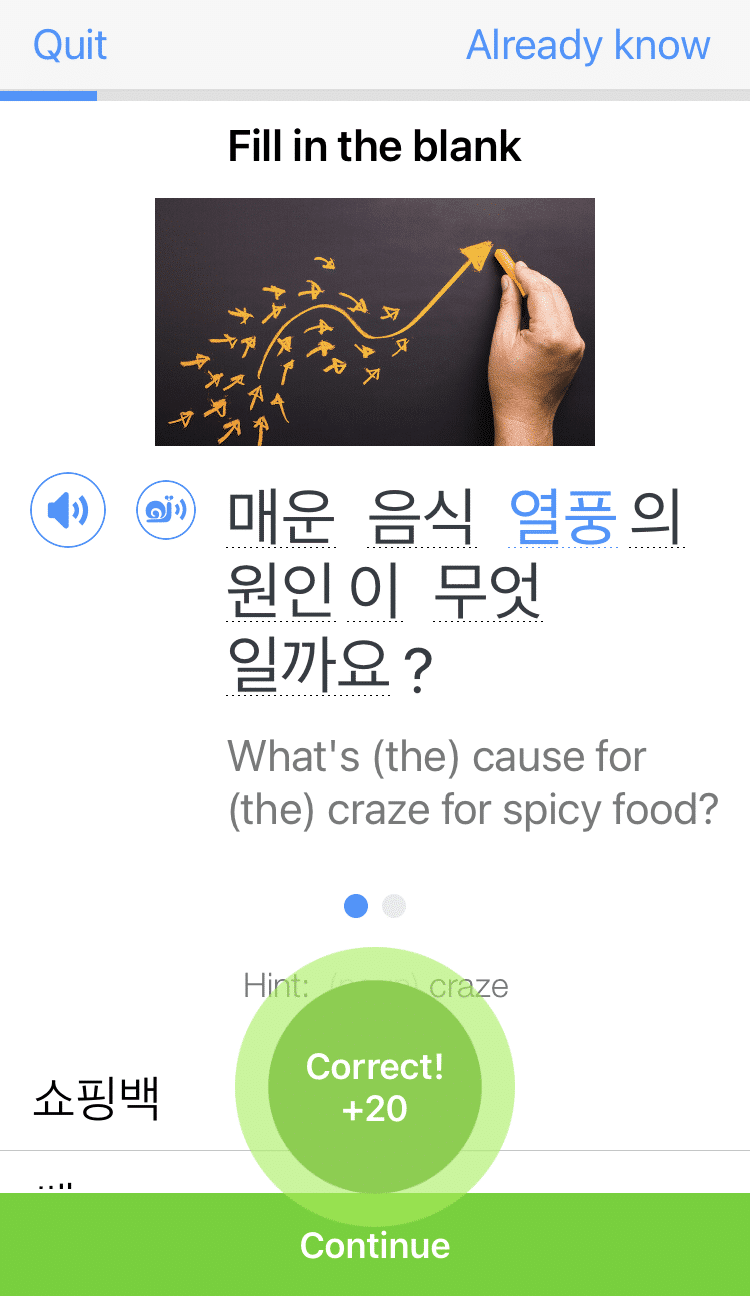Contents
- Ways to Express That You’re Sorry in Korean
- 1. 미안 — I’m sorry (Informal)
- 2. 죄송 — I’m sorry (Formal)
- 3. 제 잘못이에요 — It’s my fault
- 4. 다시는 안 그럴게요 — I won’t do it again
- 5. 제발 화내지 마세요 — Please don’t be mad at me
- 6. 죄송합니다 — Pardon me / Excuse me
- 7. 저기요 — Sorry / Excuse me
- 8. 참 미안하다 — Sorry (Sarcastic)
- 9. 정말 안됐구나 — I feel sorry for you
- 10. 깊은 애도를 표합니다 — My deepest condolences
- How to Respond When Someone Says “Sorry” to You
- How to Say “Apology” and “Apologize” in Korean
- Formalities and Honorifics When Saying Sorry
- Cultural Considerations When Apologizing in Korean
- And One More Thing...
How to Say Sorry in Korean [10 Different Scenarios]

One of the most important things you should learn when studying Korean is how to say “sorry.”
죄송합니다 and 미안해요 are two very common ways, but they aren’t going to suit every situation that might require an apology.
In this post, we’ll cover the most common ways to say sorry in Korean (ranging from informal to very formal), cultural aspects to consider when apologizing, and how to respond when someone apologizes to you.
Let’s grovel away, then!
Download: This blog post is available as a convenient and portable PDF that you can take anywhere. Click here to get a copy. (Download)
Ways to Express That You’re Sorry in Korean
You might already know that there are levels of politeness in Korean: There’s the formal or extra polite language that you use for elders, and there’s a casual tone that’s the language of close friends.
There are two main stems for apologizing in Korean that both mean “sorry”— they are:
- 미안 (mi-ahn)
- 죄송 (joe-song) [More formal]
The stems are usually not used on their own and the correct endings must be added to them.
For a quick introduction to both and how they’re used, here’s a video from our YouTube channel:
Let’s have a look at each one and their variations in closer detail!
1. 미안 — I’m sorry (Informal)
Use: Various informal situations
- 미안 (mi-ahn)
You can simply say 미안, but it wouldn’t mean much.
It’s the most informal way of apologizing in Korean. It’s not that serious and has almost a playful tone to it, sometimes even accompanied by a smirk.
You use this when addressing children or people younger than you, and when the mistake you’ve made is really not that serious. Almost a token apology, I’d say.
- 미안해 (mi-ah-nae)
You simply add 해 (hae) to the 미안 stem.
We’re still in the casual territory with 미안해 and you use it when saying sorry to your friends. It’s probably the most common informal apology and is a lot more sincere than the previous one.
Also, this is often the apology used in boyfriend-girlfriend relationships. Your “sorry” might be more acceptable when accompanied by romantic gestures of “reparations,” like flowers and chocolates.
- 미안해요 (mi-ah-nae-yo)
For this one, you simply add 해요 (hae-yo) to the 미안 stem.
With 미안해요, we’re now entering the more formal category. The tone is more serious.
You use 미안해요 for people who are: a bit older than you; your age that you don’t know very well or that you work with; and rank slightly higher than you at work or in society.
- 미안합니다 (mi-ah-nam-ni-da)
Finally, when you add 합니다 (ham-ni-da) to 미안, you have 미안합니다, which is the most formal form of apology of the 미안 stem.
If you want, you can add 정말 (jeong-mal) at the beginning of the phrase and end up with 정말 미안합니다 (jeong-mal mi-ah-nam-ni-da).
정말 is the Korean equivalent of the English word “very” or “truly.” Adding it serves as an intensifier and will let the aggrieved party know that you’re truly sorry for the hurt feelings you’ve caused.
Example:
늦어서 미안해요. (Sorry I’m late)
미안해. 내가 잘못했어. (I’m sorry. I was wrong.)
2. 죄송 — I’m sorry (Formal)
Use: Various formal situations
With 죄송, we’re getting even more formal with the apology. Note that with this stem, there are no informal ending variations, as it is only used in formal situations! The stem shouldn’t be used on its own either.
- 죄송해요 (Joe-song-hae-yo)
죄송해요 may be used with elders that you know well—like when you’re apologizing to parents or grandparents and people who are above you in age, rank, or social standing.
- 죄송합니다 (Joe-song-ham-ni-da)
죄송합니다 is a very formal way of saying “sorry.” You know that when you see endings like 합니다 , it means the situation requires polite and formal language.
Despite its high level of formality, it’s one of the most used ways of apologizing because you can never go wrong with being too polite! It’s one that you should definitely remember.
You often use 죄송합니다 to apologize to people you don’t know. Let’s say in your rush to get to the coffee shop where your girlfriend’s been waiting for two hours, you bump into somebody in the street. You say, 죄송합니다.
You also use this one with your boss, or with people of higher rank than you or who are much older than you that you don’t know very well.
Example:
다 팔렸어요. 죄송해요. (We’re sold out. I’m sorry.)
죄송하지만 저는 지금 가야 돼요. (I’m sorry but I need to go.)
3. 제 잘못이에요 — It’s my fault
Use: When you’ve done something wrong
This statement is a humble admission of fault or mistake, so you can add it to bolster your apology.
Take note that in Korea, you say “sorry” only when you’ve actually made a mistake and have caused harm or hurt. It’s essentially an admission of fault. Meaning, the mistake is attributable to you.
Example:
다 제 잘못이에요. (It’s all my fault.)
제 잘못이어서 사과했어요. (It’s my fault, so I apologized.)
4. 다시는 안 그럴게요 — I won’t do it again
Use: When you’ve done something wrong
Not doing it again is, of course, the highest proof that you really are sorry for what you’ve done. It proves to the other party that you’re seriously repentant of your offense.
Example:
하준: 왜 그랬어요? (Ha-jun: Why did you do that?)
수호: 다시는 안 그럴게요. 죄송합니다. (Su-ho: I won’t do it again. I’m sorry.)
5. 제발 화내지 마세요 — Please don’t be mad at me
Use: When you’ve done something wrong
Anyone who’s learning about a whole new culture is likely to commit a social faux pas that could require an apology. In that case, you’ll need to use this apology.
Example:
지아: 이거 깼어요? (Ji-a: Did you break this?)
예준: 네… 제발 화내지 마세요. (Ye-hun: Yes… please don’t be mad at me.)
To avoid such situations as much as possible, it’s important to understand how phrases are used in context. Using a language learning program such as FluentU can help you observe what native speakers say in various contexts.
FluentU takes authentic videos—like music videos, movie trailers, news and inspiring talks—and turns them into personalized language learning lessons.
You can try FluentU for free for 2 weeks. Check out the website or download the iOS app or Android app.
P.S. Click here to take advantage of our current sale! (Expires at the end of this month.)
6. 죄송합니다 — Pardon me / Excuse me
Use: After bumping into someone, asking someone to repeat themselves
We’ve all experienced the awkwardness of bumping into someone without meaning to. To help amend this sort of situation, simply say 죄송합니다!
This also works for requesting that someone repeat what they said—an excellent phrase for new Korean learners to commit to memory!
Example:
하린: 어떻게 생각하세요? (Ha-rin: What do you think?)
지호: 죄송합니다. 다시 한번 말씀해 주시겠어요? (Ji-ho: Sorry, could you say that again please?)
7. 저기요 — Sorry / Excuse me
Use: To get someone’s attention
This is a super useful phrase that can be used in a ton of situations: at restaurants when you want the bill, before asking a stranger for directions, or when addressing someone who’s name you’ve forgotten!
Example:
저기요, 치즈는 어디에 있어요? (Excuse me, where is the cheese?)
저기요, 이건 얼마예요? (Excuse me, how much is this?)
8. 참 미안하다 — Sorry (Sarcastic)
Use: Sarcastically
Somebody getting on your nerves, or are you feeling a little combative after a heated discussion?
Saying “sorry” will sound pretty different with this phrase!
Example:
도윤: 기분 상했어! (Do-yun: My feelings are hurt!)
지우: 참 미안하다. (Ji-woo: I’m really sorry. [sarcastic])
9. 정말 안됐구나 — I feel sorry for you
Use: To convey sympathy
Have you found yourself feeling gutted for another person’s recent experience?
Reach out and say 정말 안됐구나. This conveys sympathy and communicates a sense of frustration for the other person.
Example:
민준: 어제 시험에서 떨어졌어. (Min-jun: I failed the exam yesterday.)
하은: 거참, 정말 안됐구나. (Ha-eun: Wow, sorry to hear that.)
10. 깊은 애도를 표합니다 — My deepest condolences
Use: When someone experiences a loss
Unfortunately, it’s a fact of life that people are going to lose people close to them.
Offer condolences for their situation by saying 깊은 애도를 표합니다.
Example:
주원: 지난 주에 할아버지께서 돌아가셨습니다. (Ju-won: My grandfather passed away last week.)
민서: 깊은 애도를 표합니다. (Min-seo: My deepest condolences.)
How to Respond When Someone Says “Sorry” to You
On the rare occasion that you find yourself on the opposite side of the equation, and somebody has hurt you, forgiveness is the best attitude forward.
You can say things like the following phrases.
- 당신을 용서합니다
— I forgive you
Say this in somber tones and with a sparkling tear in your eye for full effect. Show the other person that even though you’re still hurt, you’re willing to be the bigger person and move past the offense.
- 사과를 받아들일게
— Apology accepted
This one is an informal one that you could use with someone that you’re dating or a friend.
- 아니에요, 괜찮습니다
— It’s okay, never mind
Say this to the other person when you want to play it cool (even though you are, for instance, literally bleeding).
It quickly absolves the other party of the offense and refuses to take the mistake too seriously. People make mistakes and you’d want others to forgive you on days you make yours.
How to Say “Apology” and “Apologize” in Korean
“Apology” in Korean is 사과 and “to apologize” is 사과하다 . These terms are used to talk about apologizing and can be used when asking someone to apologize, or asking if someone has received an apology from someone else (among a range of other situations). For example:
사과해 주세요. (Please apologize.)
사과 받았어? (Did you receive an apology?)
Formalities and Honorifics When Saying Sorry
As mentioned earlier, honorifics are a specific type of language that’s used with people who are older or of a higher social class—and it’s incredibly important in Korean culture.
These terms are found in the Korean alphabet as special titles, words, and verbs.
When in doubt, stick to being polite and as formal as you can until the situation has been deemed otherwise. And when it comes to saying sorry, it will vary for each situation of those who are older, younger or someone who is approximately the same age as you (a peer).
Here are some examples of saying sorry to someone who is:
- Older than you: 죄송해요. 방해할 생각은 아니었어요. (Sorry, I didn’t mean to interrupt.)
- Your peer: 늦어서 미안! (=먄!*) (Sorry I’m late!)
- Younger than you: * 정말 미안, 용서해 주라. 응? (I’m really sorry, can you forgive me. Ey?)
Cultural Considerations When Apologizing in Korean
- In Korea, you don’t use the words “sorry,” 미안해요 or 죄송해요, when expressing sympathy or when you’re regretful about another person’s misfortune. You can say 안타깝네 or 안타깝네요 instead. It means you’re sad to hear about it… but not “sorry.”
- Bowing when asking for forgiveness is expected when addressing elders, strangers, and those above you. Just as you have to calibrate your apology to the degree of offense, level of regret and the relationship you have with the aggrieved party, the bow is calibrated as well. The worse the offense and the deeper your remorse, the lower you bow and the longer you stay down.
- Educate yourself on social faux pas so you don’t accidentally offend someone. Koreans are generally understanding of foreigners’ social booboos, but you should definitely have your 죄송합니다 ready just in case. To avoid that, make sure you’re aware of the rules of Korean social etiquette.
Now you know how to say sorry in Korean! This isn’t a license to do things you’ll need to apologize for, but it’s a good skill to have in case you need it.
Download: This blog post is available as a convenient and portable PDF that you can take anywhere. Click here to get a copy. (Download)
And One More Thing...
If you enjoyed this post, you're already halfway to having the time of your life learning Korean with FluentU!
FluentU makes it possible to learn with K-pop videos, funny commercials, entertaining web series and more. Just a quick look will give you an idea of the variety of FluentU videos on offer:

FluentU really takes the grunt work out of learning languages, leaving you with nothing but engaging, effective and efficient learning. It's already hand-picked the best videos for you (which are organized by level and topic), so all you have to do is simply choose any video that strikes your fancy to get started.
Each word in the interactive captions comes with a definition, audio, image, example sentences and more.

Access a complete interactive transcript of every video under the Dialogue tab, and easily review words and phrases from the video under Vocab.

You can use FluentU’s unique Quiz Mode to learn the vocabulary and phrases from the video through fun questions.

FluentU keeps track of what you're learning, and tells you exactly when it's time for review, giving you a 100% personalized experience.
Review sessions use video context to help embed the words in your memory.
Start using the FluentU website on your computer or tablet or, better yet, download the FluentU app from the iTunes or Google Play store. Click here to take advantage of our current sale! (Expires at the end of this month.)








